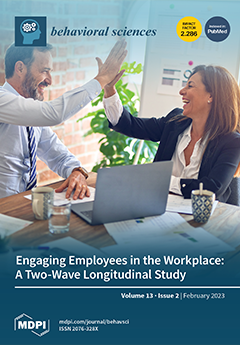Behav. Sci., Volume 13, Issue 2 (February 2023) – 115 articles
An analysis of data from 150 employees demonstrated that employees who receive social support from colleagues and supervisors are more engaged in their work. Moreover, employees who strongly identify with their organization are less critical of the social support received when determining their level of work engagement. Therefore, organizations should invest in increasing identification, as well as building a high-quality social exchange relationship, especially when levels of organizational identification are low or decreasing. View this paper
- Issues are regarded as officially published after their release is announced to the table of contents alert mailing list.
- You may sign up for e-mail alerts to receive table of contents of newly released issues.
- PDF is the official format for papers published in both, html and pdf forms. To view the papers in pdf format, click on the "PDF Full-text" link, and use the free Adobe Reader to open them.






